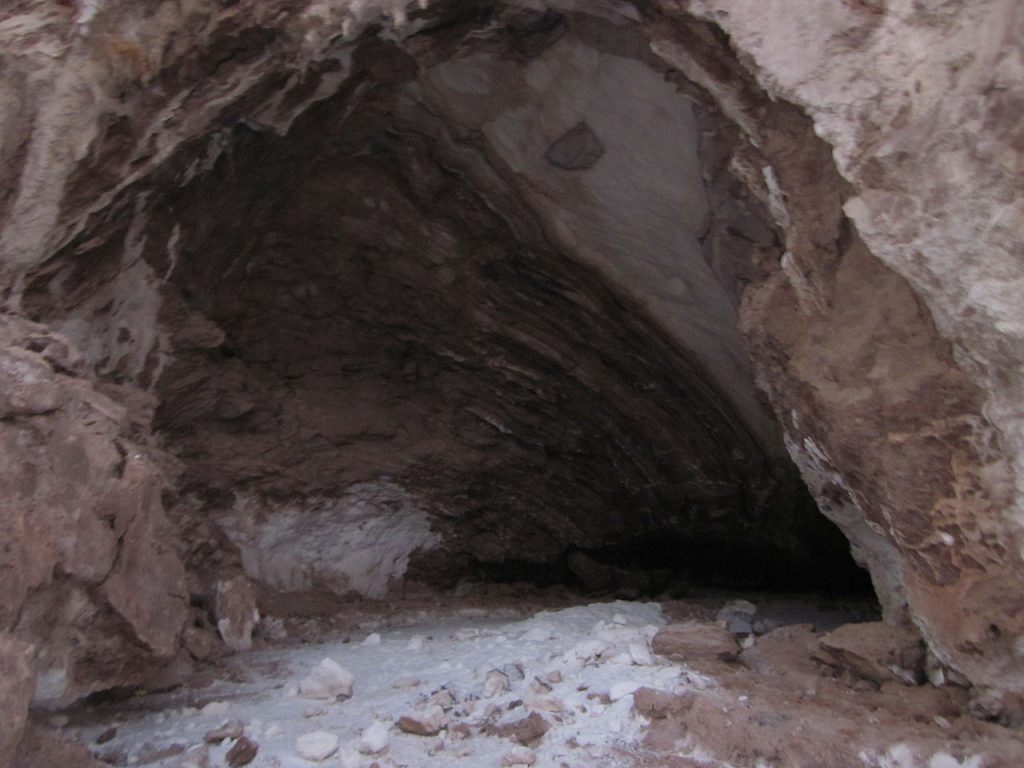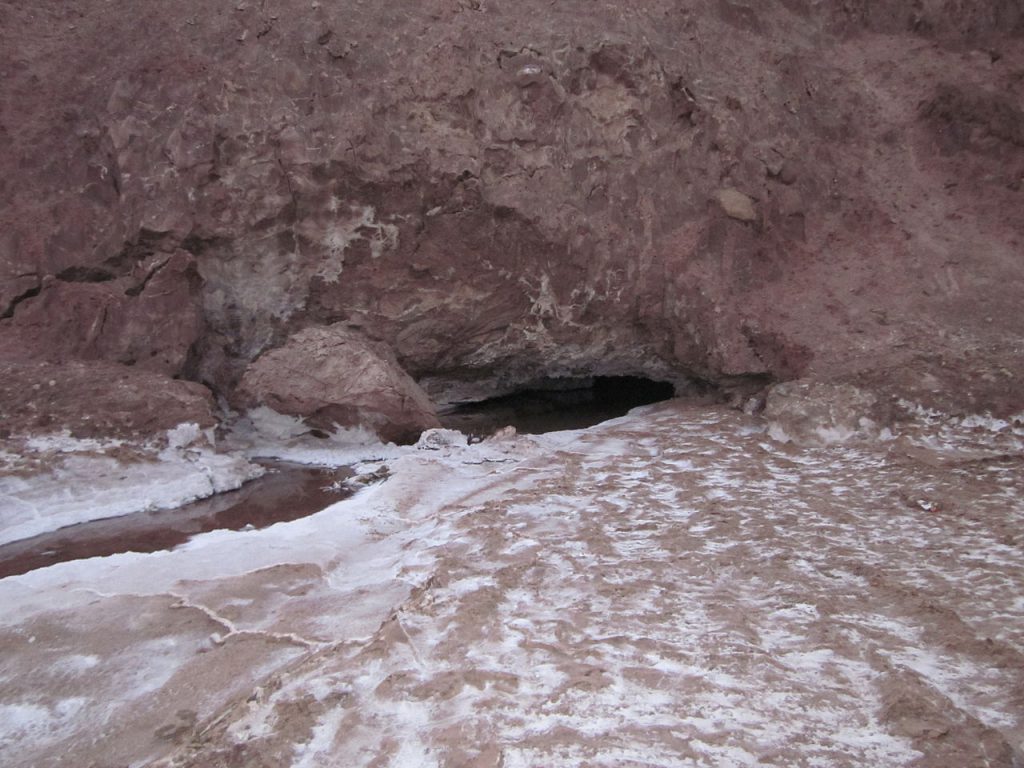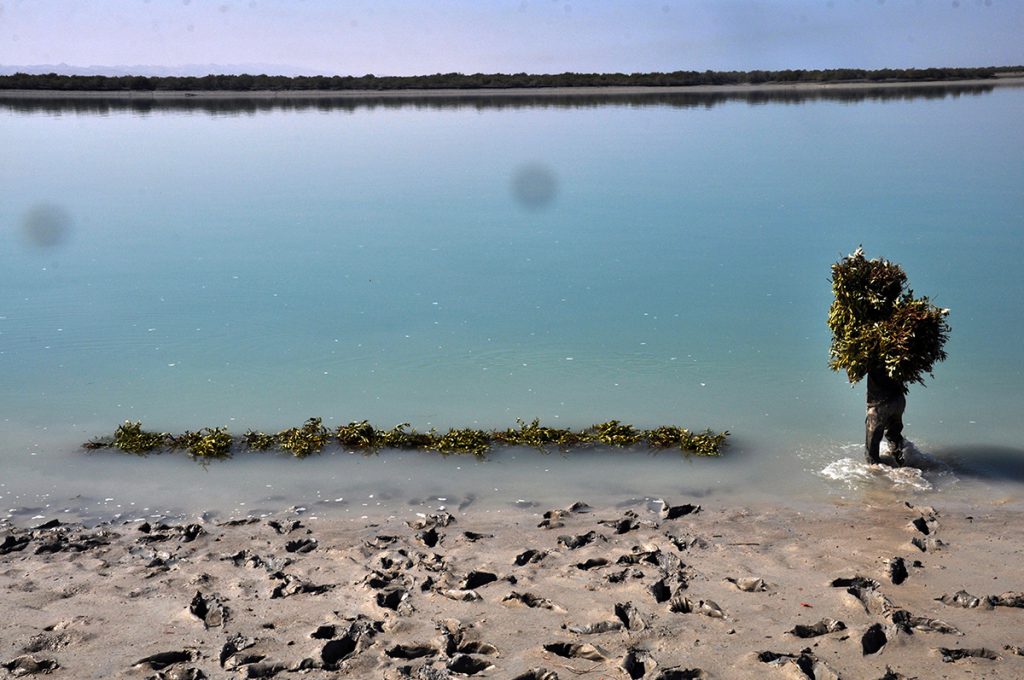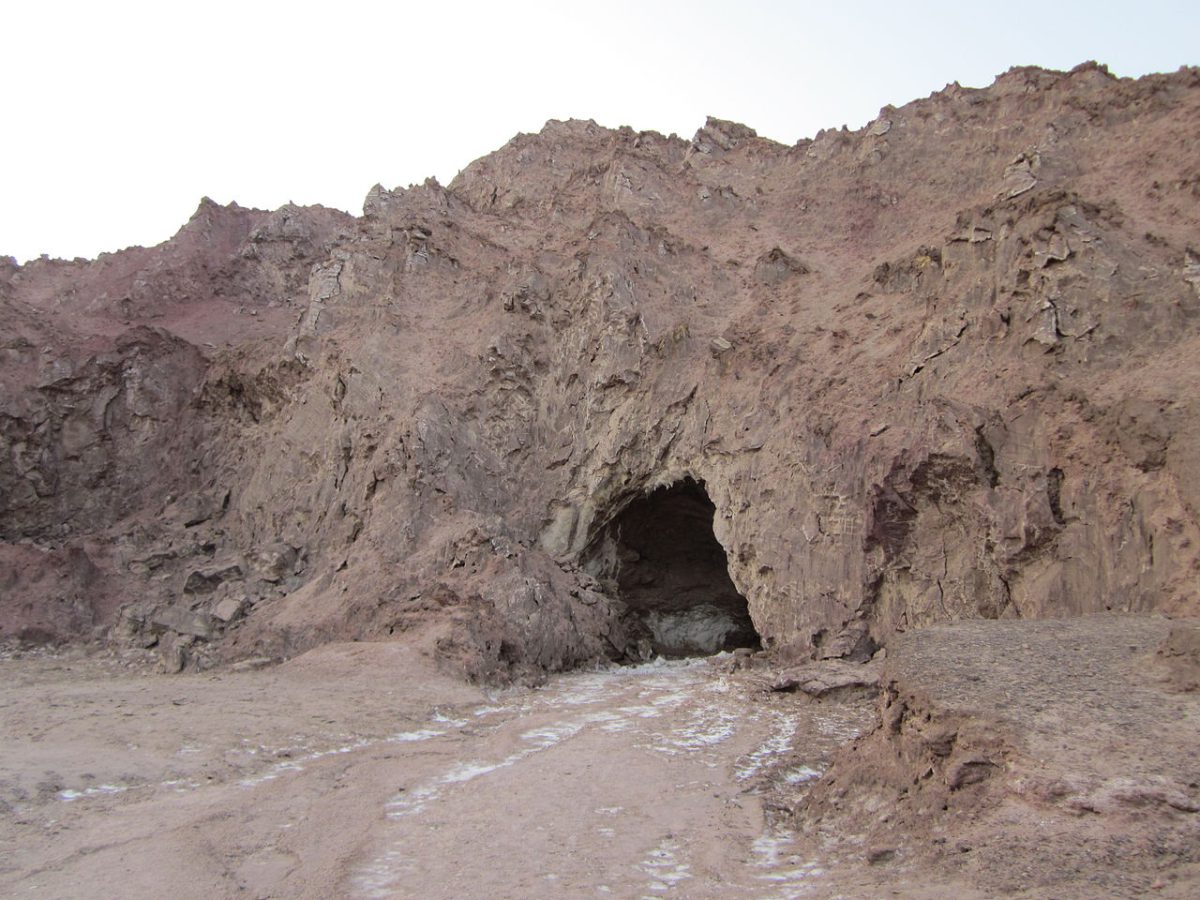Table of Contents
With a sprawling length of six kilometers, Qeshm Salt Cave stands as the world’s largest salt cave. This subterranean marvel boasts delicate salt sculptures, meandering salt rivers, and towering salt megadomes, creating a breathtaking landscape. The cave’s interior is adorned with salt crystals in an array of colors, from vibrant pinks and purples to deep blues, crimson reds, and pristine whites.
The different layers of colors, reminiscent of an oil painting, sparkle and glimmer under the light, offering a surreal visual experience. As you explore deeper into the cave, the mesmerizing hues and intricate formations of the salt crystals transform the underground passage into a natural art gallery, captivating every visitor with its unique and otherworldly beauty.
Qeshm Salt Cave History

The Qeshm Salt Cave, a geological marvel nestled in the heart of the Persian Gulf, traces its origins to an era long before human history. Over 250 million years ago, during the Permian period, the region that would become Qeshm Island was submerged beneath an ancient sea. As intense heat baked the landscape, this primordial ocean slowly evaporated, leaving behind vast deposits of salt, gypsum, and other minerals. These deposits, buried under layers of sedimentary rock over millions of years, formed the foundation for the cave’s eventual creation.
Salt Cave Qeshm history is a testament to the dynamic nature of our planet. Salt, being less dense and more pliable than surrounding rock, began to flow upward through weaknesses in the Earth’s crust when subjected to immense pressure. This process, occurring over millions of years, resulted in the formation of a salt dome – a mountain of salt piercing through the landscape. Water, nature’s patient sculptor, then went to work on this salt mountain.
Rainwater, slightly acidic from dissolved carbon dioxide, seeped into cracks and gradually dissolved the salt, carving out an intricate network of passages and chambers. This ongoing process of erosion has shaped the Qeshm Salt Cave into the breathtaking subterranean labyrinth we see today, with its vast system of tunnels and galleries extending for kilometers beneath the island’s surface.
Saltwater of Qeshm Salt Cave
The Namakdan Salt Cave Qeshm is a treasure trove of natural wonders, with its saltwater flows taking center stage in this subterranean spectacle. As visitors venture deeper into the cave, they’re greeted by shimmering streams that meander along the cave floor, creating an enchanting interplay of light and reflection. These crystalline rivulets act as nature’s mirrors, capturing and distorting the surrounding salt formations in their gentle ripples, adding an extra layer of magic to the already awe-inspiring environment.
At the heart of this saline ecosystem lies a small, natural white spring, continuously replenished by the cave’s saltwater flows. This perennial water source not only sustains the cave’s unique microclimate but also contributes to its ongoing geological transformation. The interplay between the island’s humid air and the cave’s porous structure allows water to seep through, resulting in saturated saltwater that slowly drips from the ceiling. This process gives birth to delicate salt icicles, their translucent forms gradually elongating over time, adding to the cave’s otherworldly ambiance and serving as a testament to the ever-evolving nature of this remarkable underground realm.
Structure of Qeshm Salt Cave

Namakdan Salt Cave Qeshm, stretching over 6,400 meters, is renowned for its intricate and mesmerizing geological formations. Upon entering, visitors are greeted by a floor blanketed in crystalline salt, creating a stunning white landscape that is accentuated by the presence of colorful crystals in shades of pink, purple, blue, and crimson red. The unique crunching sound produced by stepping on these salt crystals adds an auditory dimension to the visual splendor. The cave’s ceiling is adorned with an array of crystal stalactites, perpetually forming due to the island’s humid air and the constant infiltration of water. This ongoing process results in saturated saltwater dripping onto the stalactites, continually shaping their delicate structures.
The cave also features remarkable streams of saltwater that flow along its bed, reflecting the cave’s interior like a natural mirror and enhancing the enchanting atmosphere. These streams converge into a natural white pool at the foot of Namakdan Mountain, resembling a spring. The main bed of this spring is tinged with red, attributed to iron oxide compounds, particularly hematite. This interplay of water and minerals not only creates a visually captivating scene but also contributes to the cave’s dynamic and evolving structure. The salt extracted from this cave is noted for its high magnesium content and is used in various medical applications, including supplements for professional athletes.
Therapeutic Uses of Qeshm Salt Cave
The Namakdan Salt Cave in Qeshm isn’t just a geological wonder; it’s also a natural pharmacy. The cave’s salt, rich in magnesium, has gained recognition for its diverse therapeutic applications. Visitors to this subterranean marvel often find themselves enveloped in an environment that does more than dazzle the eyes – it potentially heals the body.
The cave’s unique microclimate, infused with salt particles, is believed to offer significant benefits for those grappling with respiratory ailments. As people explore the cavern’s crystalline passages, they’re not just sightseeing; they’re potentially giving their lungs a rejuvenating workout, with many reporting improved breathing and reduced symptoms after their visit.
But the cave’s therapeutic potential doesn’t end at its entrance. The salt extracted from Namakdan has found its way into the world of sports medicine and nutrition. Professional athletes, always on the lookout for natural performance enhancers, have embraced this mineral-rich salt in capsule form. These supplements are thought to aid in muscle recovery and overall physical well-being, making Qeshm’s salt a prized commodity in athletic circles. For the curious visitor, there’s an added bonus – the salt is edible.
So, if you’re tempted to taste a bit of the cave’s crystalline walls (though we’d recommend against licking the actual cave), rest assured that you’re sampling a natural, mineral-rich treat that’s not only safe but potentially beneficial for your health.
Tips to Know Before Visiting Qeshm Salt Cave
When planning your adventure to Qeshm Salt Cave, it’s crucial to come prepared for a unique subterranean experience.
The first 100 meters of the cave are relatively accessible, offering breathtaking views of salt chandeliers that dangle from the ceiling like crystalline works of art. However, venturing beyond this point requires careful consideration and proper equipment. As you progress deeper, the cave becomes more challenging to navigate, with darkness enveloping you just 20 meters further in. A reliable flashlight is absolutely essential for illuminating your path and revealing the hidden wonders of the cave’s intricate salt formations.
For those with an adventurous spirit looking to explore the cave’s depths, enlisting the expertise of a professional guide is strongly recommended. These guides are familiar with the cave’s layout and potential hazards, ensuring a safer and more informative journey. Be prepared for some unexpected company during your visit – the cave is home to various tiny insects and a population of bats. Consider bringing a face mask to ward off any bothersome insects, and if you’re sensitive to the presence of bats, be aware that you might encounter their sounds echoing through the cavern.
Remember, this is their natural habitat, so approach with respect and minimal disturbance. By taking these precautions and approaching your visit with a sense of adventure and respect for the environment, you’ll be well-equipped to fully appreciate the unique geological marvel that is Qeshm Salt Cave.
How to Get to Qeshm Salt Cave
To see how to get to Salt Cave Qeshm, start your journey by driving past Qeshm Airport. After approximately 60 kilometers, you will need to turn onto a sandy road known as Salt Cave Road.
This unpaved route leads you through the stunning landscapes of Qeshm Island, where the natural beauty unfolds around you. Continue driving for another 23 kilometers, and soon you will find yourself at the parking lot of the cave, ready to embark on a short walk to the entrance.
Best Time to Visit Qeshm Salt Cave
The south of Iran is known for its scorching summer heat, making the cooler months of fall and winter the ideal time to explore the region’s hidden gems. Qeshm, the largest island in the Persian Gulf, is a prime example of this, as its renowned Salt Cave comes alive during the more temperate seasons.
Other Attractions in Qeshm Island

The mystical Qeshm Island offers far more than just its famous Salt Cave.
Mangrove Forest
Nature lovers will be enchanted by the Mangrove Forest, also known as Hara Forest. This protected area showcases a unique ecosystem where saltwater and freshwater mingle, creating an ideal habitat for diverse flora and fauna. As you glide through the forest’s labyrinthine waterways on a tranquil boat ride, keep your eyes peeled for various bird species, including elegant herons and vibrant flamingos.
If you’re lucky, you might even spot playful dolphins frolicking in the waters. The dense mangrove trees, with their intricate root systems emerging from the water, create a surreal landscape that feels almost otherworldly.
Valley of the Stars
For those seeking geological wonders, the Valley of the Stars is an absolute must-visit. This breathtaking natural attraction features a series of majestic gorges and canyons, sculpted over centuries by the relentless forces of erosion. As you wander through the winding paths, you’ll encounter unique rock formations that resemble fantastical figures and shapes, giving the valley an almost mystical aura.
Local legends claim the valley was formed by a fallen star, adding to its enchanting allure. For an unforgettable experience, visit the Valley of the Stars at night when the clear desert sky reveals a stunning tapestry of stars, making you feel as if you’re walking among the constellations themselves.
Khorbas Cave
Nestled among the coral hills of Qeshm Island, Khorbas Cave stands as a testament to the region’s rich geological and cultural history. This ancient wonder, dating back to the 6th century BC, is an integral part of the Zagros Mountain Range’s folds. The cave’s unique structure features four entrances that offer breathtaking views of the island’s southern coastline, inviting visitors to step back in time and explore its mysterious depths. Khorbas Cave’s allure extends beyond its geological significance.
Local legends suggest it may have once served as a temple dedicated to Anahita, the revered goddess of fertility, health, and wisdom. While this claim remains unverified, the cave’s walls, adorned with ancient carvings and punctuated by hole-like windows, certainly fuel the imagination.
FAQs about Qeshm Salt Cave
Q1: How long is the Qeshm Salt Cave?
A1: The Qeshm Salt Cave is about 6,400 meters long.
Q2: What can you see inside the Qeshm Salt Cave?
A2: You can see salt sculptures, rivers, and colorful salt crystals inside the cave.
Q3: When is the best time to visit the Qeshm Salt Cave?
A3: The best time is during the cooler fall and winter months.
Q4: Where is the world’s largest salt cave?
A4: It is located in Mount Sodom, an area close to the Dead Sea in Israel. The cave’s official length is around 10 kilometers, which makes it the longest salt cave known to exist in the world.
Q5: Are salt caves man-made?
A5: Salt caves are man-made spaces inside underground salt deposits. They are created by injecting water into the salt rock, which slowly dissolves the salt and forms the cave.
Last Words: Discover the Best of Qeshm Salt Cave with a Customized Tour
The Namakdan Salt Cave on Qeshm Island is the world’s largest salt cave, stretching six kilometers. Inside, you’ll find beautiful salt sculptures, winding salt rivers, and large salt domes. The cave is decorated with colorful salt crystals in pink, purple, blue, red, and white. The layers of colors sparkle under the light, creating a stunning visual experience. As you go deeper, the colorful crystals make the cave look like a natural art gallery, enchanting every visitor with its unique beauty.
To truly experience the wonder of Qeshm Salt Cave, consider embarking on one of the Customized tours available when you travel to Iran. To Iran Tour provides Iran tours and travel packages designed by professionals who aim to make your journey unforgettable. Our Iran Tours are meticulously planned to ensure every traveler has an exceptional experience. We are here to help you have a great experience in Iran, making sure your adventure is as unique and memorable as possible.

